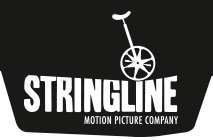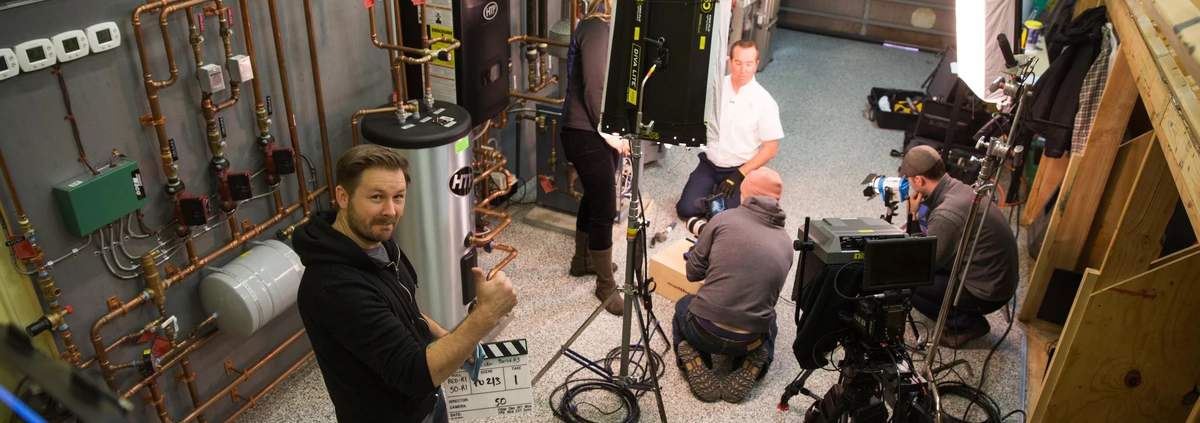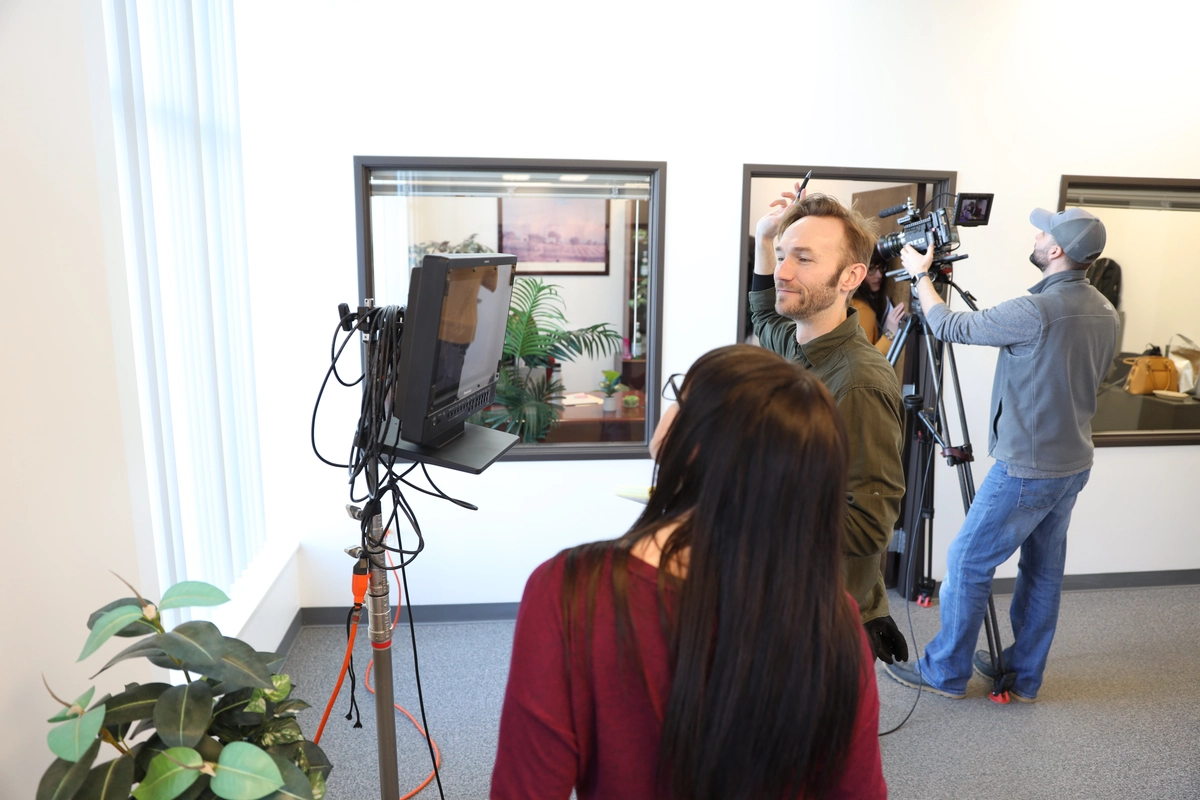10 Ways to Enhance Employee Training With Video Onboarding
According to 2021 data, 83% of people prefer watching a video over accessing instructional content by text or audio. That number is loud and clear.
As a business owner, you want your employees to be sharp, focused, and ready to start performing well in their roles so that you can see a return on your investment. So, it’s time to stop treating your new employees any differently than you would your target audience.
If video content and storytelling hold the attention of your audience, why wouldn’t they do the same for your new employees? Businesses across the country are quickly turning to video onboarding for the same benefits and creative uses we’ll explore today.
Benefits of Video Onboarding
Video onboarding is a great way to introduce new employees to your company and its culture. By using video, you can show new employees what to expect from their job and how they can be successful in their roles. Video also helps new employees learn the company’s policies and procedures. Some of the best benefits of utilizing video onboarding include:
1) Reduced Training Costs 💰
Video onboarding can save your business money on training costs. You can create video content once and use it again and again to onboard new employees. There’s no need to pay for expensive in-person training sessions that require travel and other associated costs.
2) Improved Information Retention 🧠
People retain information better when they watch videos than when they read text or listen to audio. By using video, you can be sure that your new employees will remember the information you’re trying to communicate.
- Boost this retention even more by segmenting videos into smaller chunks.
- Videos that are six minutes or less are the sweet spot for holding the viewer’s attention.
3) Increased Employee Engagement 💡
Employees appreciate video onboarding because it allows them to take their time learning about the company. Onboarding video content can be as long or short as needed and breaks down information into manageable pieces. This way, employees are able to focus better on the task at hand without feeling overwhelmed.
In addition, video engages employees by providing a more personal introduction to their new company. Rather than simply reading policies and procedures, employees are able to see and hear how things work in practice. Seeing is believing, and this is especially true when it comes to video training.
4) Faster Onboarding Process 🏃
When you have pre-made, high-quality training videos on hand, you don’t have to scramble or dawdle in search of additional and relevant information to share. Gone are the days of frantically pulling together training materials and inevitably forgetting critical information. When all of the information is consistently in one spot, the onboarding process goes much smoother and quicker.
5) Easier Accessibility for Remote Employees 📍
Remote work isn’t going anywhere. More and more employees are seeking out fully remote work, and your company needs to accommodate this trend so that you have a fully equipped team from anywhere. If your company has remote employees, video is the perfect way to include them in the onboarding process.
Rather than asking them to travel to your headquarters for training (which costs you a pretty penny), you can provide video content that they can watch from anywhere. This is a great way to make sure that everyone is on the same page, no matter where they’re located.
Types of Video Training
It’s clear that video onboarding has a whole slew of benefits. And an additional benefit is that there are multiple types of videos you can create to optimize your employee training process! You don’t have to feel confined to only creating a boring introduction video. You can sum up the entire training process with videos, including, but not limited to, these types:
6) First-Day Onboarding Information
No employee training would be complete without the tedious onboarding information. You can make specific videos for each department in your company with the exact tools, software, accounts, and paperwork each employee will need to access in their role.
If your company uses any specific software or systems, it’s important to include training videos on these tools. Your new employees need to know how to access and utilize these tools in order to do their jobs effectively.
Be sure to use this opportunity to open with a short, sweet, but punchy welcome video. Making a great impression and letting your new employee know that you’re eager to collaborate with them helps with employee retention in the long run.
7) Workplace Culture
Most job seekers find company culture to be an important part of their decision process. Don’t fall into the trap of talking up your workplace culture in the interview process, only to let it fall by the wayside once the employee actually begins work.
A company culture video is another great option to have in your video onboarding wheelhouse. You can use this video to introduce your new employee to the team they’ll be working with, as well as the company’s core values. You might even want to include a video tour of the office!
8) Health and Safety Policies
This video is critical for companies with in-person workforces. No employee should ever have to worry about their safety while on the job, and a health and safety video is a great way to ensure that your employees are always aware of the proper procedures.
Additionally, if your company has specific protocols about COVID-19 or other health concerns, a video is a great way to ensure that everyone is on the same page. You don’t want your employees to have to worry about what happens when they get sick, so a health and safety video is a great way to give them some peace of mind.
9) Product or Service Breakdown
Just like how you want your target audience to have an understanding of your product or service, you need your employees to be subject matter experts in what your company offers. Use a training video to give a comprehensive overview of your product or service, as well as any specific features or benefits that your new employees should be aware of.
It’s also important to include any industry-specific jargon in this video so that your new employees are up to speed on the language of your business. This will come in handy when they’re interacting with customers or clients.
10) Interactive “On-Your-Feet” Training
Don’t limit your employees to just sitting and watching videos all day. Try making an interactive video to help them put what they’ve learned to the test in a safe, comfortable environment. Many people “learn by doing,” so offering this type of training video is incredibly valuable.
How Should You Go About Making Onboarding Videos?
Keep in mind that even if you make multiple onboarding videos to incorporate into employee training, they won’t go very far if they’re boring or poor quality. You should put the same amount of intention and effort into ensuring you have a high-quality, engaging product that you would want someone to do for you.
You have two options when it comes to creating your employee onboarding videos: use an in-house team or outsource the work.
- If you have an in-house marketing or video department, you can use their skills to create the training videos.
- However, if you don’t have a dedicated video department, or your current employees don’t have the capacity for this large of a project, you can outsource to a professional video production agency. Choosing an agency with proven experience in filming and editing training videos will streamline your process tremendously.
Need Someone to Take Onboarding Videos Off Your Plate?
It’s not really a question of “if” you’ll make the switch to video training but “when.” If you get stressed out thinking about how you’ll allocate the time and energy to completing the project in-house, then consider outsourcing the work to a qualified video production agency!
Here at Stringline Pictures, we have years of experience producing high-quality, informative, and entertaining onboarding videos for all kinds of businesses. We’ll take everything off your plate, from scripting and filming to sound mixing and colorizing.
Contact Stringline today to get started!





